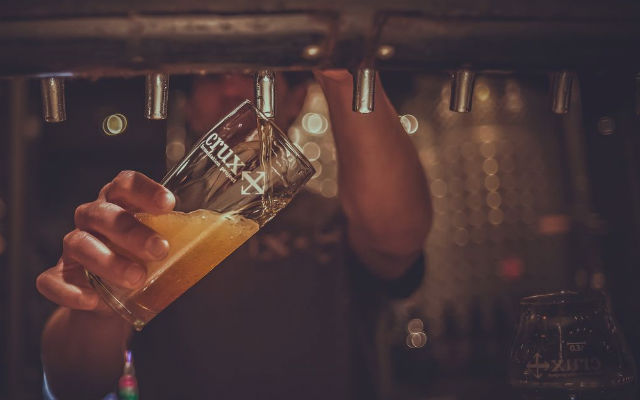
Hops have been, and continue to be, an intriguing aspect of the brewers world. There are currently over 140 commercial varieties to choose from.
Regions that produce hops are Germany, U.S., Czech Republic, Poland, China, Australia, New Zealand and others to name the more prominent growing areas. As brewers we always try to add some unique flavor or raw material to our beers to make them stand out. Hops being the major “condiment” in beer becomes our drawing board for flavors, aroma and bitterness.
Years ago it was easy to choose what we wanted, hops were always in leaf form in large bales, special filters were used in the breweries and we had a few dozen varieties to choose from. As years progressed pellets became the new product along with extracts.
Although isomerize products had existed and were patented as early as the 1960’s they didn’t come into more common use until the 1990’s. This changed how the hops were used and dosed in the brew house.
Later and more recently came advanced products, aroma products and flavor hops which added a new dimension to what we had available to use. The flavor hops in recent years have us looking at hops differently.

Before we asked about alpha and oil content, we basically had two types of varieties, High alpha and aroma varieties. Along come these flavor hops where alpha was less important and the flavor component of the variety became the primary sought after ingredient. Flavors such as citrus, orange, melon, maracuja and other tropical fruits began to surface in beers — especially IPA’s. These were not fruit derived extracts or aromas, they were coming directly from the newly developed hop varieties themselves.
From a breeding standpoint hops traditionally were bred for disease resistance and higher yields. Now for the first time the actual flavors of the variety were becoming a priority. Disease resistance wasn’t ignored and certainly yields were considered, but the focus shifted to what flavor would the variety produce in the finished liquid.
This shift to flavor and other hop components has led to a revolution in how the hop industry is planning and strategizing from the farming standpoint. The U.S., which was a traditional high alpha producer, went in the last few years from a 70-30 high alpha to aroma percentage to a complete reversal. Now over 70 percent of U.S. grown hops are aroma varieties. These growing trends and demands from the brewers for more diverse and interesting flavors has led to an explosion in new varieties in recent years. In most cases a new variety could take close to 10 years to reach commercial viability.
Today’s brewing industry requires new varieties and innovation far faster and those time frames have been cut down significantly. It still requires much research and experimentation to develop a new hop variety.
As brewers trying to develop new beers and new flavors in our product portfolios its most important to be aware of these different hop categories.
We need to look beyond the alpha acid content of a hop. Brewers should be looking more closely at oil profiles and all the other components that make up each hop variety. The real key is not to just read a technical sheet on a new variety, but to hand rub and smell the varieties but most importantly brew with the new hop. Many varieties may provide a certain profile when one is selecting, rubbing and sniffing in the selection room compared to how it behaves in a finished beer. How we dose the hop, times, point of addition, temperatures etc. are parameters that impact how that hop will behave in the finished beer. How we manipulate all those parameters come from experience and trial and error in the brewery.
At the end of the day we have to believe that with some skill and a bit of luck we will have a delicious beer to enjoy with friends and colleagues.




Be the first to comment